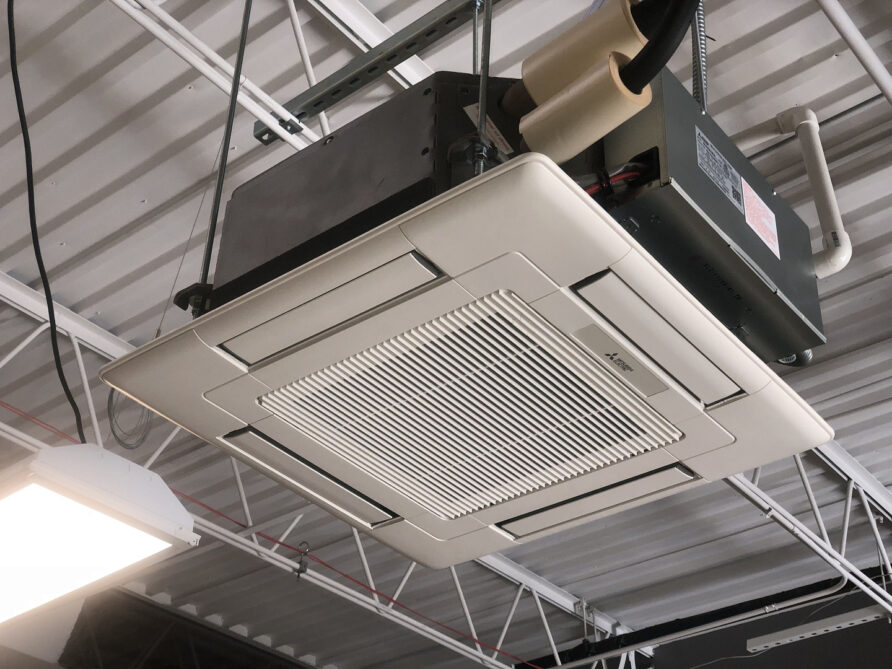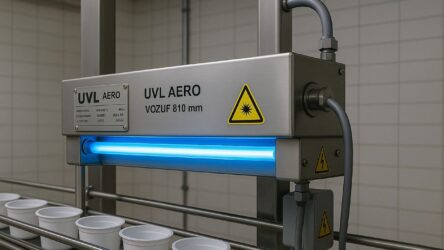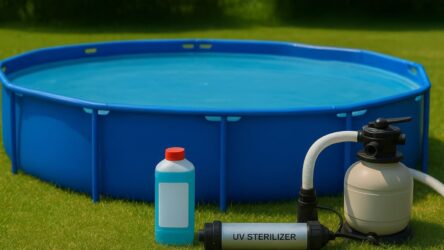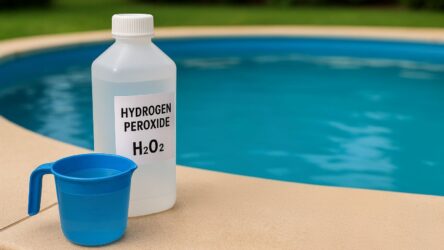Indoor air quality directly impacts the comfort and health of occupants. Air conditioning systems, widely used in commercial, industrial, and residential buildings, can serve not only for cooling but also for air disinfection. How does this work? The integration of germicidal ultraviolet lamps into an air conditioning system effectively eliminates bacteria, viruses, and other microorganisms, ensuring a safer and healthier indoor environment.
How air conditioners work and the role of UV lamps
Air conditioners operate by drawing air from a room, cooling it through a heat exchanger, and then recirculating it. These systems range from compact split units to large industrial installations. However, during operation, air conditioners create a humid environment that can facilitate microbial growth. Installing UV lamps within the system prevents this by neutralizing airborne pathogens. As a result, air conditioners equipped with UV lamps provide both cooling and continuous air disinfection.
Integrating UV lamps into air conditioning systems
Equipping air conditioners with quartz-based UV lamps transforms them into highly effective germicidal air recirculators. This cost-efficient solution eliminates the need for separate air disinfection units while enhancing indoor air quality.
To properly integrate UV lamps into an air conditioning system, the following steps should be followed:
- Determining installation location – UV lamps are placed within the airflow circulation zone, typically near the heat exchanger.
- Selecting the right equipment – The power, dimensions, and quantity of UV lamps must be carefully chosen to ensure effective disinfection.
- Installation and component protection – The lamps are securely mounted inside the air conditioner, while power supply units are placed in designated compartments. Since UV radiation can degrade plastic components, lamps should be positioned in areas where exposure to plastic parts is minimized. Additionally, wiring must be protected using specialized sheathing.
- System maintenance – Regular monitoring and periodic replacement of UV lamps are essential to maintain peak disinfection performance.
UV lamp integration is especially beneficial in environments requiring stringent air purity standards, such as food processing plants, warehouses, and facilities with high operational air conditioning loads.
Advantages of UVL’s UV lamps for air conditioners
UVL provides a comprehensive approach to integrating UV lamps into air conditioning systems:
- Selection of models that best meet system requirements.
- Detailed installation guidelines to facilitate seamless integration.
- Technical documentation and compliance certificates for regulatory assurance.
- Expert consultation and performance calculations to assess the effectiveness of UV lamp integration.
With UVL’s solutions, air conditioners become more than just cooling systems — they transform into advanced air disinfection units, promoting safer indoor environments.
Conclusion
The incorporation of UV lamps into air conditioning systems represents an innovative approach to enhancing indoor air quality. These systems ensure superior air hygiene, which is increasingly important in meeting modern health and safety standards. With UVL’s expertise, implementing this technology becomes a streamlined and effective process.







